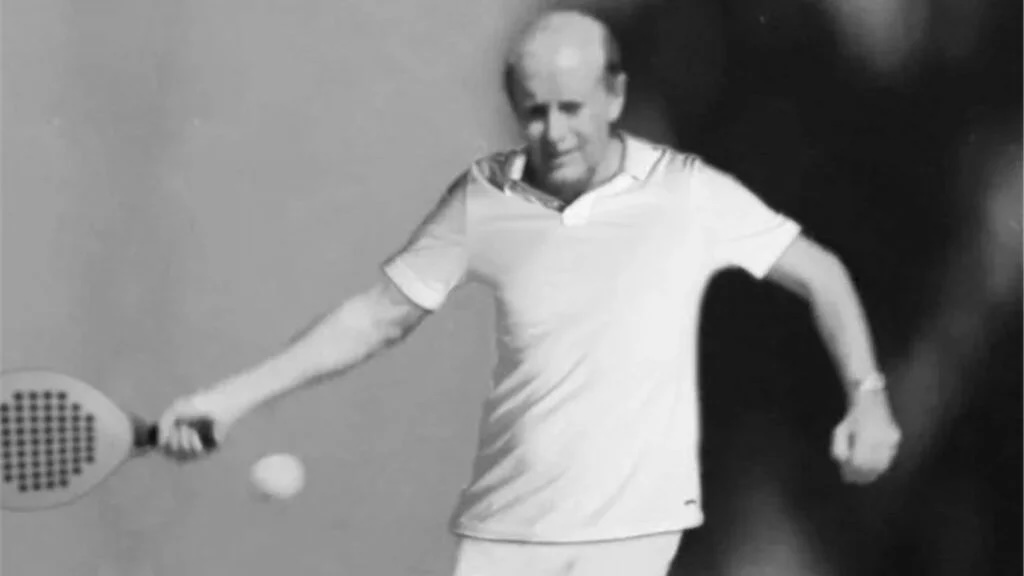History of padel: From a Boat in Acapulco to Courts Around the World
From Enrique Corcuera and his Acapulco court to a global phenomenon: milestones, people, and key moments in padel.

History of padel: From a Boat in Acapulco to Courts Around the World
Padel wasn’t born in a factory or a sports‑innovation lab. It began as a clever solution at a home in Acapulco, spread thanks to the curiosity of friends, and ended up conquering clubs, cities, and entire countries. This is the story—half myth, half reality—of how a local game became a global phenomenon.
Origins: Acapulco, 1969
The most accepted version places the origin in 1969, when Enrique Corcuera, at his home in Acapulco (Mexico), outlined a space of about 20 × 10 meters, enclosed it with walls and fencing, and set a net in the middle. He adapted rules from tennis and used paddles (inspired by American paddle‑tennis) with lower‑pressure tennis balls. A brand‑new game was born that quickly captivated his guests.
- Initial approximate dimensions: 20 × 10 m
- Walls: a core element from day one
- Paddles: wooden, solid, no strings
From Acapulco to Marbella: 1974
The big leap came when Prince Alfonso of Hohenlohe, a friend of Corcuera, tried the game and brought it to Spain. At the Marbella Club (1974) he built the first European courts, refined dimensions and rules, and introduced it to influential social circles. Figures like Manolo Santana helped spread it along the Costa del Sol.
- Formalized rules and measurements
- The first social competitions in clubs
Spain adopts padel (1980s and 1990s)
Spanish fandom exploded through the 80s and 90s. The sport entered clubs, residential areas, and schools. In 1993 the Spanish Padel Federation (FEP) was created and the competitive calendar took shape.
- First national and regional championships
- Expansion of indoor and glass courts
Argentina: the second cradle
Almost in parallel, padel crossed the Atlantic and experienced an extraordinary boom in Argentina in the late 80s and throughout the 90s. Thousands of courts were built and a technical school arose that would shape the style of modern play.
- Highly refined tactical and technical focus (bandeja, vibora, wall‑drops)
- Generations of players who would dominate the professional tour
Professionalization and circuits
- 1992: First Padel World Championship (Spain)
- 2005–2012: Padel Pro Tour (PPT), the first stable professional circuit
- 2013: World Padel Tour (WPT) raises production, reach, and level
- 2022: Premier Padel arrives with events in major international arenas
- 2024: Circuits converge via acquisition/unification, pushing a more integrated global calendar
Today, professional padel fills arenas, streams across platforms, and features international stars.
Women’s padel: talent and visibility
Women’s padel has grown relentlessly, with icons like Carolina Navarro, Alejandra Salazar, Gemma Triay, Ariana Sánchez, and Paula Josemaría. Better coverage, more sponsorship, and strong academies have cemented its leading role.
Innovation: paddles, courts, and gameplay
- Paddles: from solid wood to fiberglass and carbon, EVA or FOAM cores, and round/teardrop/diamond molds
- Courts: from opaque walls to panoramic courts without visible posts, LED lighting, and indoor venues
- Game: faster, more tactical and physical, with overheads like the bandeja and vibora — see Bandeja vs. Vibora
Why has padel triumphed?
- Social: played in doubles, fosters community, inclusive
- Accessible: friendly learning curve; fun from day one
- Tactical: walls and positioning add constant strategy
- Infrastructure: compact court; easy to integrate in clubs and cities
If you’re starting, review the Essential rules and scoring.
Timeline (key milestones)
- 1969: Enrique Corcuera creates the game in Acapulco
- 1974: Alfonso of Hohenlohe takes it to Marbella; expansion in Spain
- 1992: First World Championship
- 1993: Spanish Padel Federation is born
- 2005: Padel Pro Tour professionalizes the circuit
- 2013: World Padel Tour powers the modern era
- 2022: Premier Padel accelerates internationalization
- 2024: Circuit integration and a unified global calendar
From neighborhood club to the world
Italy, Sweden, France, Portugal, the Netherlands, and the Middle East have seen meteoric growth. The UK and United States are the next major hotspots, with private investment and college leagues. The near future points to bigger arenas, better broadcast production, and advanced data for players and coaches.
The padel that was born in a house in Acapulco is now part of millions of people’s daily lives. Your next step? Play, learn, and log your matches in padellog to understand how you evolve. Because you already know: “If it’s not in padellog, it doesn’t count.”





